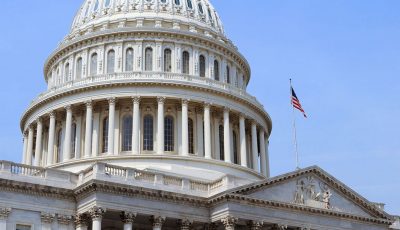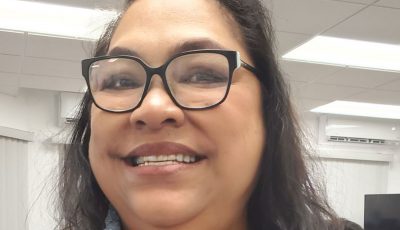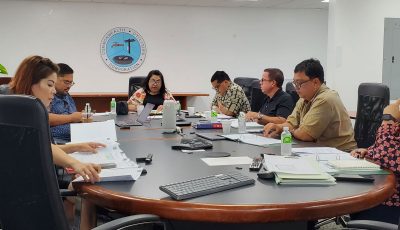CUC directed to resolve Saipan water supply issues
U.S. District Court for the NMI designated Judge David Carter raised concerns on Friday why some parts on Saipan have no 24-hour water supply. He directed the Commonwealth Utilities Corp. and other parties to put up plans to fully resolve this problem.
Showing in court the island’s map, Carter asked CUC to draw circles with different colors the areas that have a 24-hour water supply and those that have no 24-hour water supply. Carter then asked CUC the problems of those areas that have no 24-hour water supply.
The judge then directed CUC and other parties to talk among themselves in the courtroom about finding the solutions, funding, and timeline for the project to complete, among other issues.
After a few minutes of discussions, CUC and U.S. government lawyers presented the answers to Carter.
When Saipan Tribune left the courtroom Friday afternoon, Carter was still holding the conference.
Stipulated order number 1 requires CUC to have a U.S. Environmental Protection Agency-approved drinking water and wastewater master plan to determine current and future needs for 20 years, and to provide a long-term plan for CUC’s drinking water and wastewater improvements.
On the north side of the island, CUC said the areas that have 11-and-a-half hours of water supply are San Roque and Tanapag; those have seven hours are Garapan Hotel Street and Garapan Middle Road.
The areas having only two hours of water supply are Upper Navy Hill, Gloria Drive areas, and China Town areas.
The rest have 24-hour water supply.
On the south side, the areas with 10 hours of water supply are Monsignor Martinez Road in Koberville, As Lito Drive areas, As Terlaje Hill-Chalan Lalau Beach Road and Middle Road, Chalan Pale Arnold-Quartermaster Road in Gualo Rai, and Tottotville Housing Compound.
Areas having two hours of water supply are Obyan areas.
The rest have 24-hour water supply.
Carter said that CUC’s water loss only results in EPA putting money in a system where loss has not decreased. Historically, the problem with water loss is the water meters. Carter said he learned that 9,000 to 10,000 water meters were initially purchased. About 6,000 water meters were bought on the second purchase. He said there was a record of 60 percent to 70 percent of failure with the meters.
When asked for the name of the water meters, CUC’s financial manager Bettie Terlaje replied they referred to them as “smart meters.”
Carter asked why CUC purchased 6,000 more water meters from the same company when the 9,000 meters that were initially purchased have a 60- to 70-percent failure.
CUC’s associate engineer Larry Manacop agreed that there was a big failure and that the 6,000 were just replacements, pursuant to a warranty. Manacop said the 6,000 replacements also failed.
CUC engineer Nicolette Villagomez countered this, saying there was 5- to 10-percent failure rate with the 6,000 replacements. Villagomez said CUC got the replacements for free and CUC is now in the process of sending the defective meters for replacements.
Carter then asked what CUC needs and CUC deputy executive director William Gilmore replied that they need to purchase water meters.
Carter expressed worry that, with the Saipan casino taking off and the resulting rapid economic growth of the island, this will have an impact on CUC’s water and power supply. There may be no problem right now but what if there is “something” (development) to follow. The judge said he is afraid that the water and power rates associated with the costs for this economic impact will be passed on to the public.
CUC’s legal counsel James Sirok said they are prepared to answer those questions. Carter said he does not need answer to the questions.
CUC executive director Gary Camacho agreed with Carter about the rapid economic growth, citing that there was a 40-percent increase in power demand in 2016.
Camacho also noted the economic multiplier of the casino. “It’s very challenging to the water and wastewater side and the power side,” Camacho said.
He said CUC has dilapidated 25-year-old power plants on Saipan.
Carter praised Camacho for “doing a good job” at CUC but pointed out that it not fair to those not having a 24-hour water supply paying the same rates as those have.
Prior to the entry of stipulated order number 1, U.S. Department of Justice environmental enforcement section senior attorney Bradley O’Brien said only 26 percent of the Saipan population experienced continuous 24-hour drinking water service.
O’Brien cited in his report that with five years of the entry of SO1 and with improvements funded substantially by EPA, the availability of 24-hour Saipan drinking water service reached 94 percent in 2013.
O’Brien said that fell substantially to 73 percent in 2014.
He said that in December 2016, 24-hour drinking water service on Saipan increased to 81 percent and remained at 81 percent in 2017.
Tinian and Rota have 24-hour drinking water service.



























